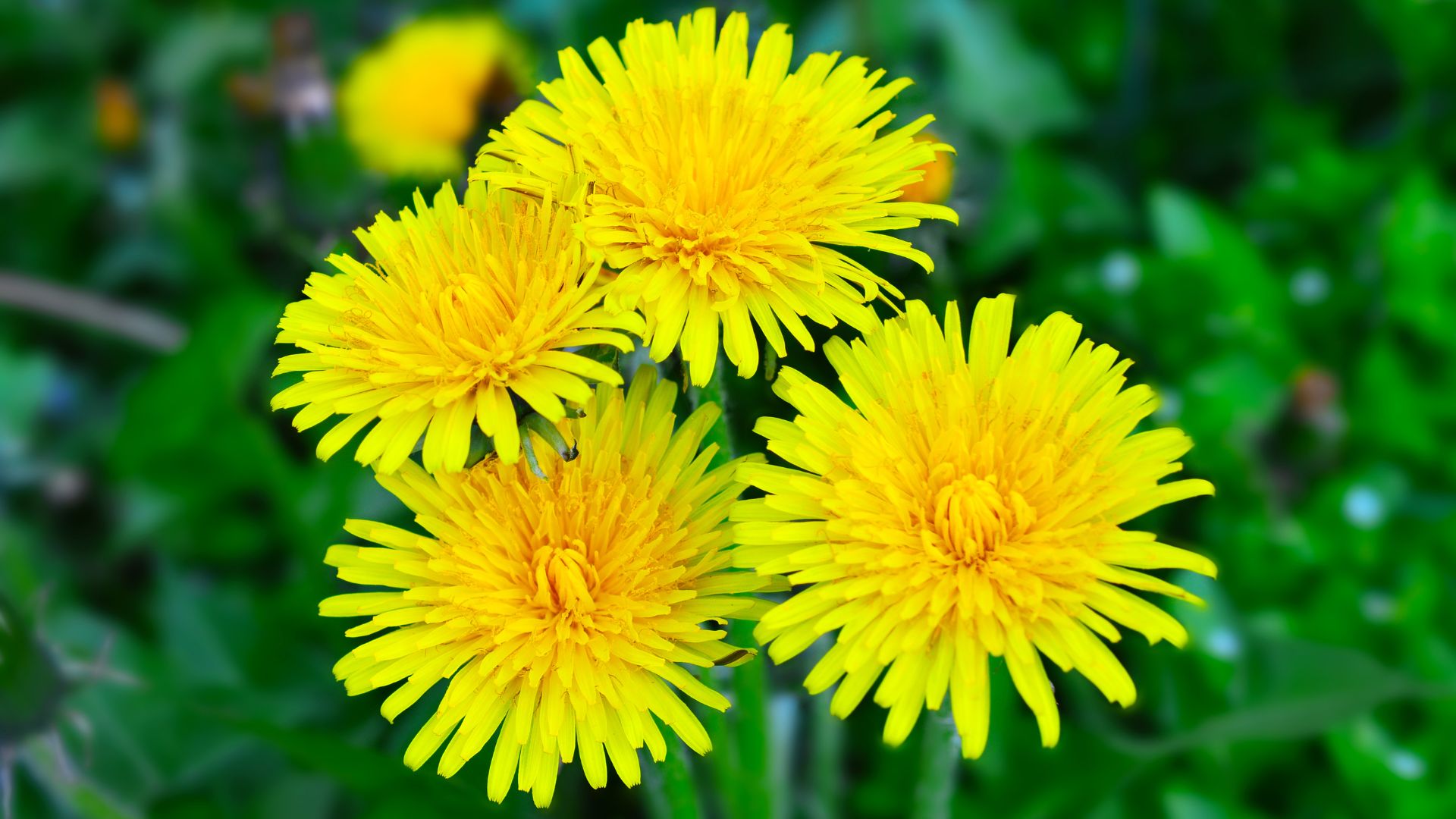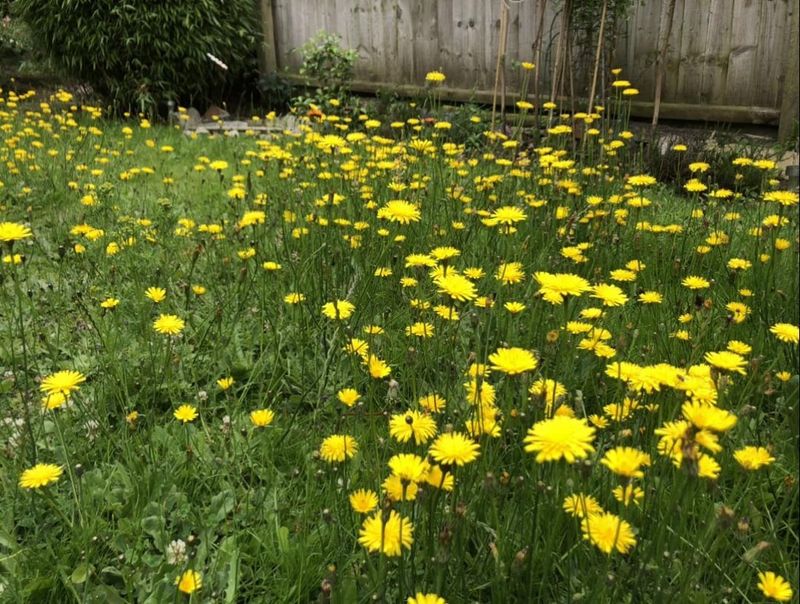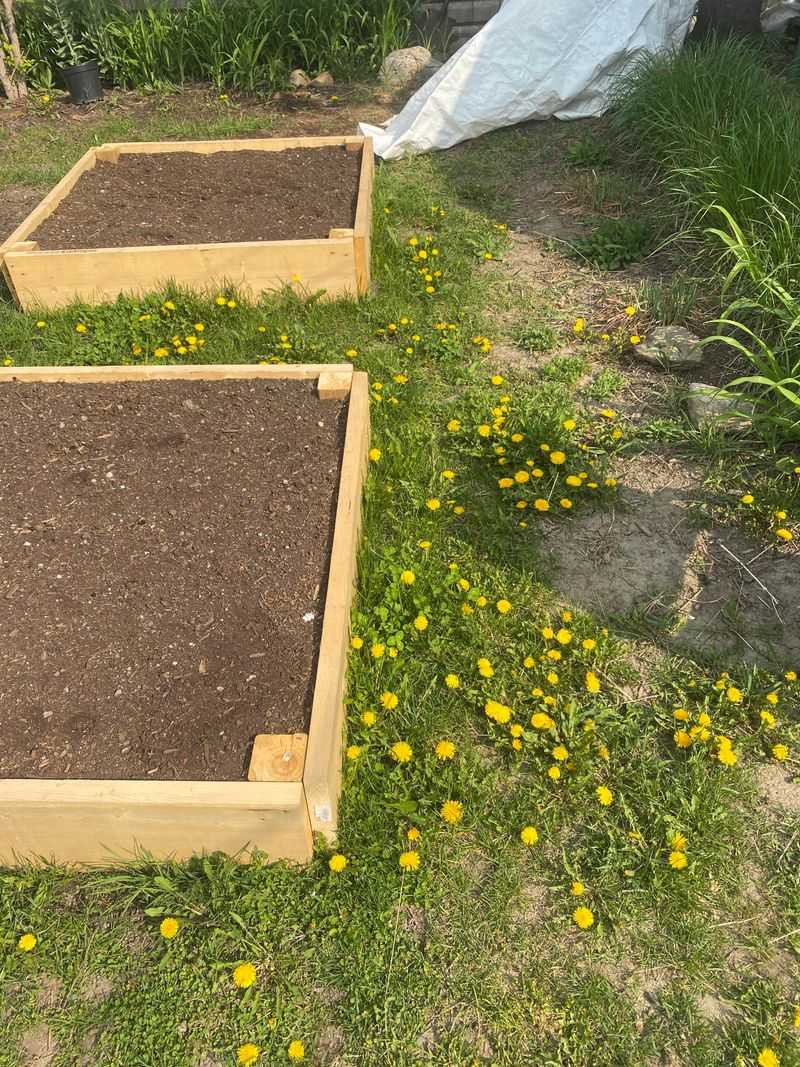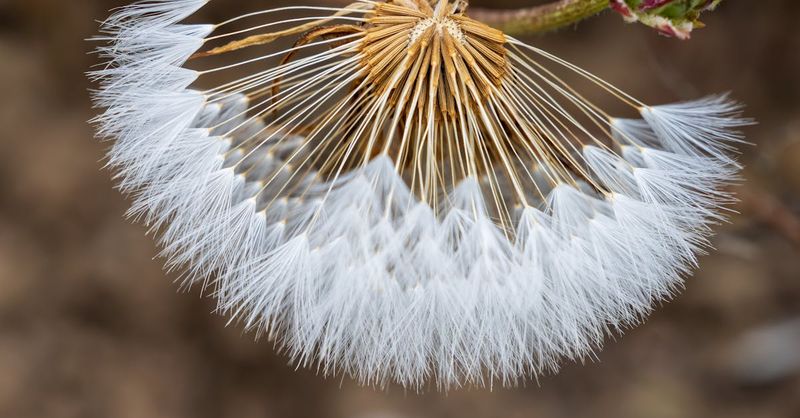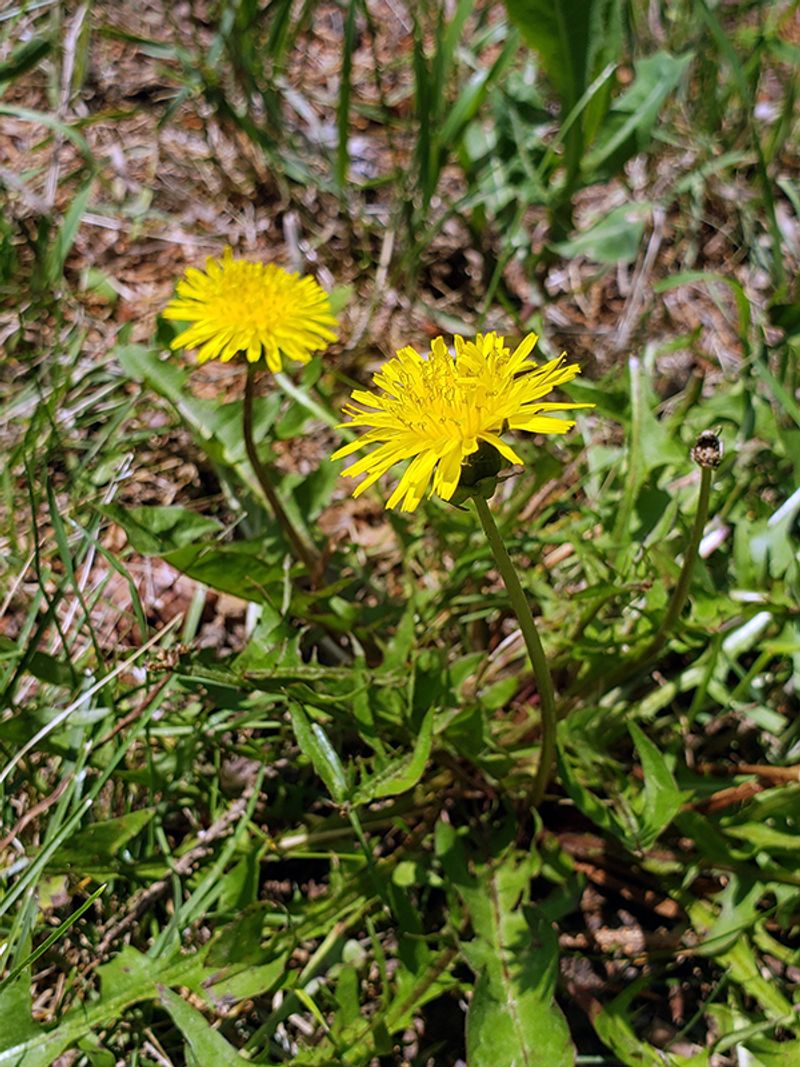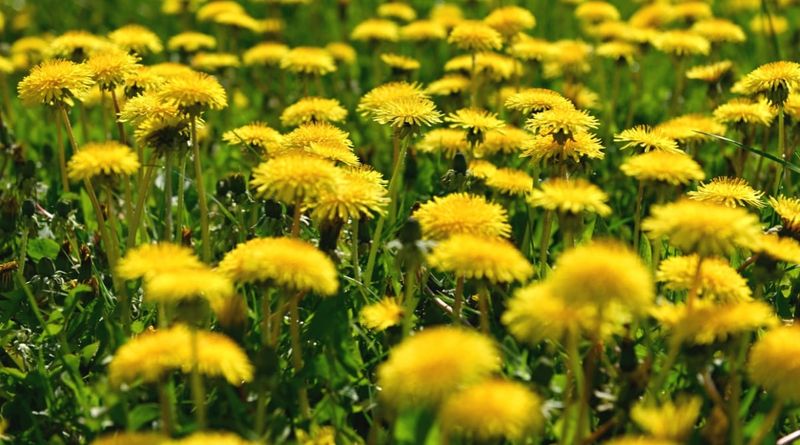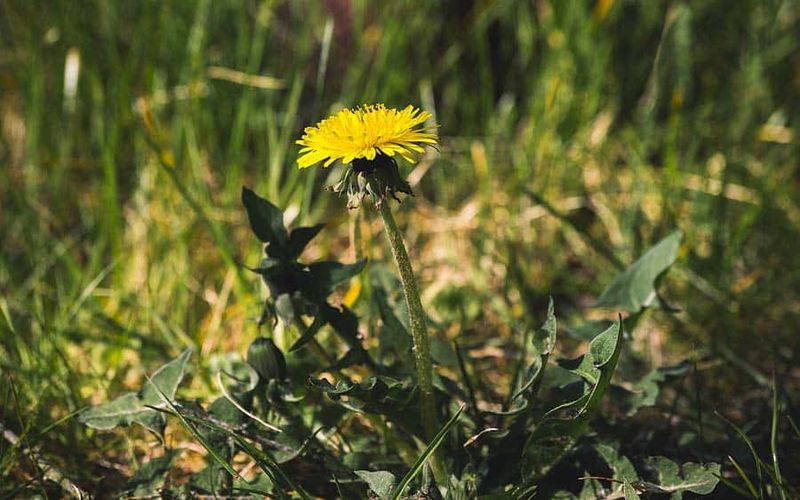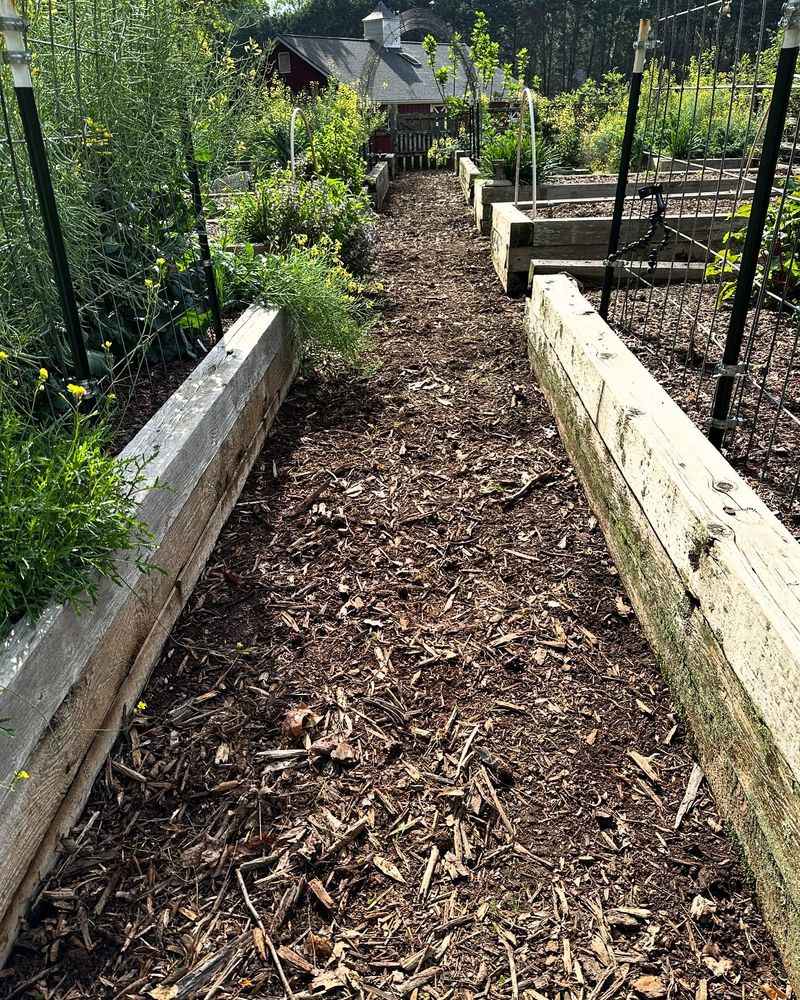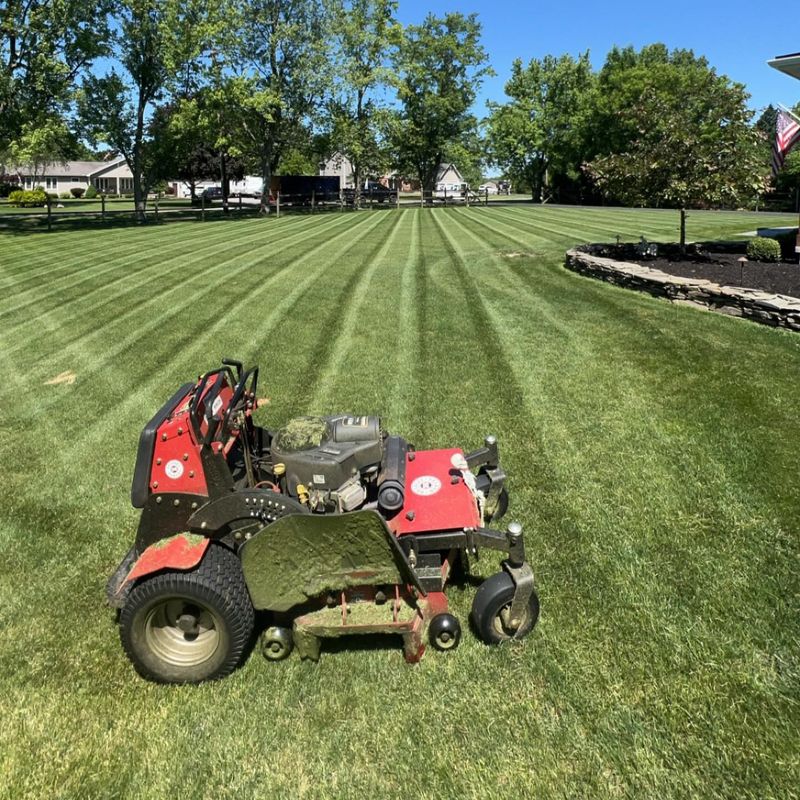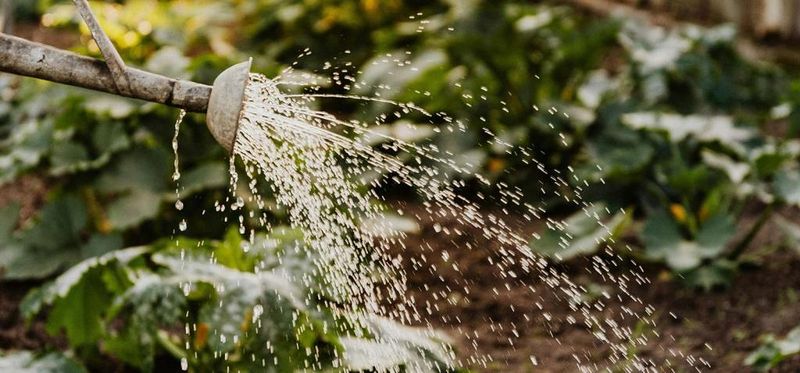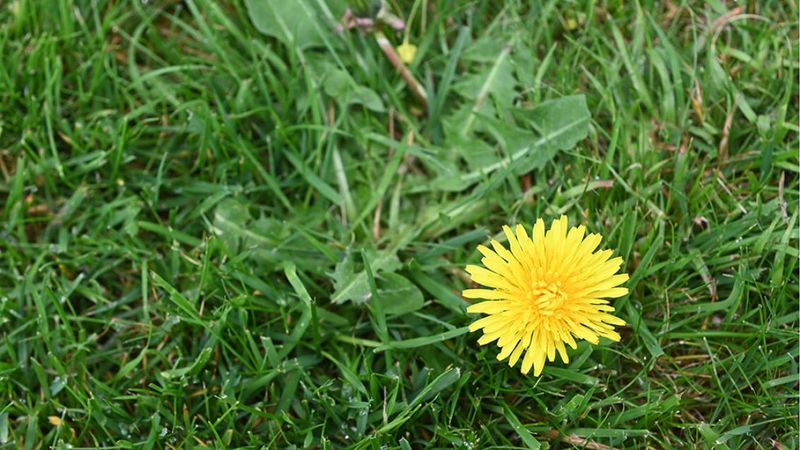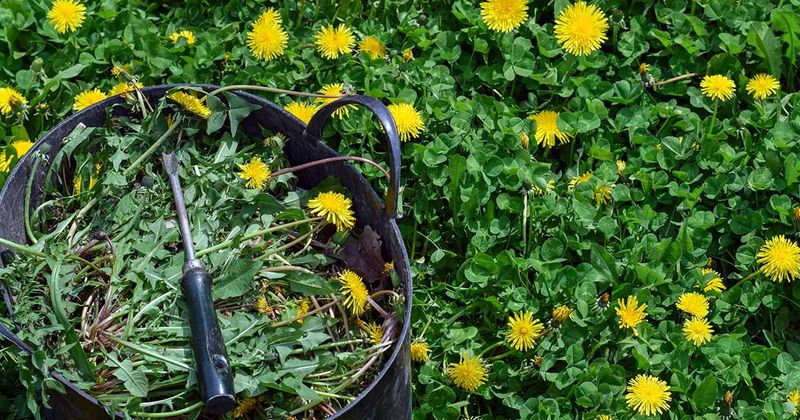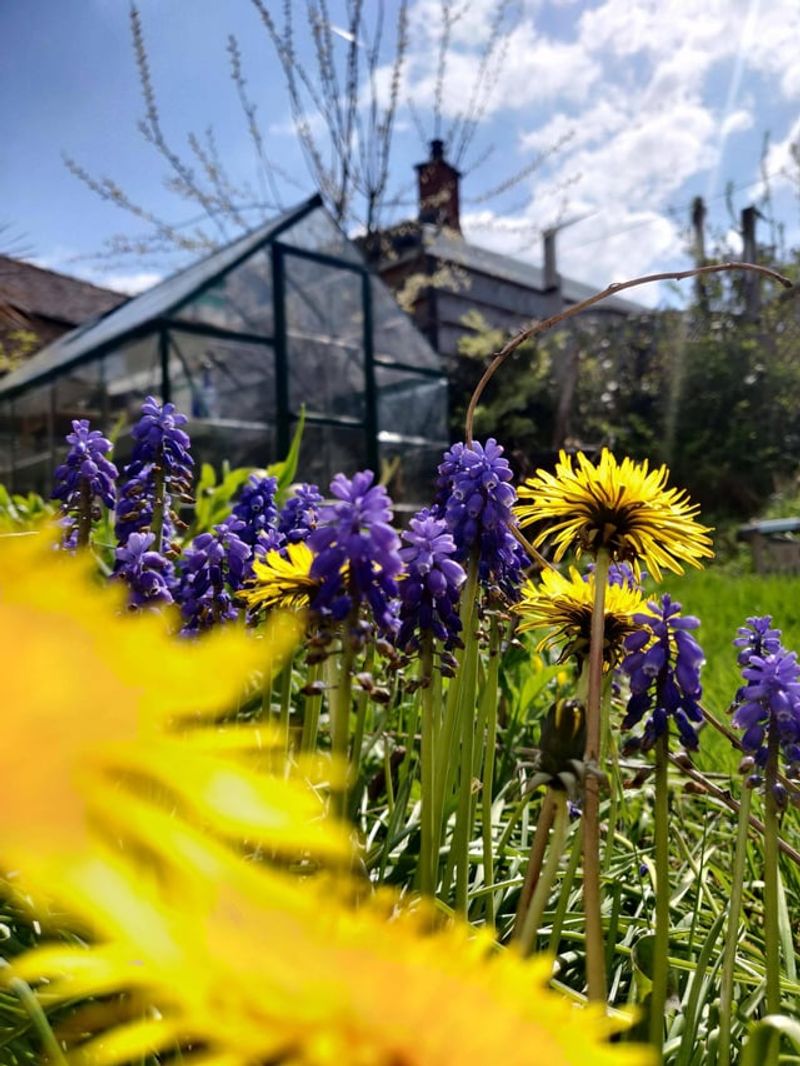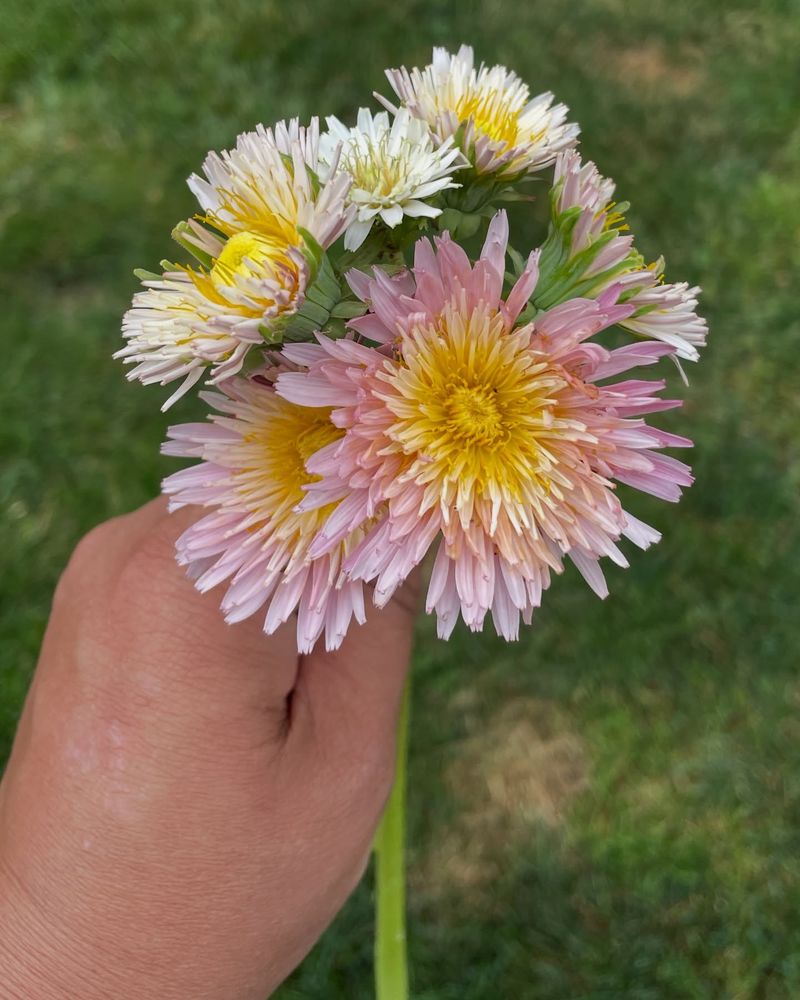I used to pull every single dandelion from my lawn the moment it popped up—determined to keep things neat. But then I learned how much early-season pollinators depend on them, especially when little else is blooming.
That bright yellow isn’t just cheerful—it’s essential fuel for bees and butterflies coming out of winter. Now, I’ve carved out a small corner just for them. It’s controlled, tidy enough for my neighbors, and buzzing with life on sunny spring mornings.
Watching those pollinators flock to the flowers has made me appreciate dandelions in a whole new way. With a bit of routine trimming and boundary maintenance, the patch stays in check without invading the rest of the yard. It’s a small shift that brings a lot of joy—and a lot of buzzing visitors.
1. Choose A Sunny, Contained Location
The perfect dandelion patch needs plenty of sunshine to thrive, but should be somewhat isolated from your main lawn areas. I’ve found that a corner section near a fence or against a garden shed works wonderfully.
Natural barriers like walkways, driveways, or stone borders help contain the spread by blocking windborne seeds. My neighbor uses a strip along her driveway that’s both visible for pollinators and easy to maintain.
Avoid placing your patch uphill from other garden areas, as water runoff can carry seeds downslope and create unwanted colonization elsewhere.
2. Start With A Clean Slate
Before planting your dandelion patch, remove all existing vegetation and prepare the soil properly. This gives you control from day one instead of trying to tame an existing wild area.
Clear the chosen space by hand-pulling weeds or using cardboard sheet mulching for several weeks. Last year, I tried both methods side-by-side and found the cardboard approach required less initial labor but more patience.
Add a thin layer of compost to provide nutrients without making the soil too rich, which would encourage aggressive growth and harder-to-control plants.
3. Install Physical Barriers
Buried edging that extends 6-8 inches below ground prevents dandelion roots from spreading underground. After watching my first patch escape within weeks, I learned this step isn’t optional!
Metal, plastic, or even repurposed materials like old roof flashing work well as barriers. The barrier should extend 1-2 inches above soil level to block seeds from blowing over.
For extra protection in sandy soils where dandelions spread quickly, consider lining the bottom of your patch with landscape fabric before adding soil back in.
4. Select Sterile Varieties When Possible
Some dandelion varieties produce fewer viable seeds than others, making them easier to control. Garden centers occasionally offer these less aggressive types, though they’re not always labeled as such.
Red-seeded dandelion (Taraxacum erythrospermum) typically produces fewer seeds than common dandelion. My garden club friend swears by this variety after comparing them in her test plots.
If you can’t find specialized varieties, consider looking for dandelions with smaller flowers, as they often produce fewer seeds per head compared to their showier cousins.
5. Plant In Clusters With Spacing
Rather than scattering seeds across your entire patch, plant dandelions in distinct clusters with space between them. This approach creates concentrated pollinator feeding stations while making maintenance more manageable.
Leave 8-12 inches between clusters to allow for some natural spread without immediate overcrowding. The empty spaces can be filled with stepping stones or low-growing companion plants that won’t compete aggressively.
Marking each cluster with a small stake helps track their boundaries during the first season, especially helpful when distinguishing intentional plantings from opportunistic volunteers.
6. Surround With Competitor Plants
Border your dandelion patch with aggressive, shallow-rooted plants that create a living barrier. Creeping thyme became my favorite dandelion-blocker after watching it successfully compete for space along the edges.
Mint family plants, strawberries, or ornamental grasses all work well as boundary plants. They quickly fill any gaps where dandelion seeds might otherwise establish and create a natural containment system.
Just be careful not to choose something that might become its own control problem! My first attempt with mint needed more management than the dandelions themselves.
7. Deadhead Religiously
The single most important maintenance task is removing spent flowers before they form seed heads. Each dandelion can produce up to 200 seeds, with a single plant generating thousands throughout a season.
Make deadheading a daily ritual during peak blooming periods. I keep a small container by my patch and spend five minutes each morning collecting spent blooms while enjoying my coffee.
Focus especially on plants near the patch edges, as these are most likely to spread seeds beyond your controlled area and into spaces where they’re not welcome.
8. Create A Seed Catch Border
Mulch heavily around your dandelion patch with materials that trap airborne seeds before they travel. Wood chips work well, creating a rough surface where parachute-like seeds get caught instead of sailing away.
Make this border at least 12 inches wide. During my third season with dandelions, I widened my mulch ring to 18 inches and noticed a dramatic decrease in escapees throughout the rest of my yard.
Check and refresh this mulch barrier regularly, especially after wind storms when seed dispersal is highest. Any trapped seeds should be collected and disposed of.
9. Establish A Regular Mowing Schedule
Mowing the areas immediately surrounding your dandelion patch creates another defense layer against spread. Set your mower blade low for these border zones to catch any flowers that might have escaped your notice.
During peak seed production times, mow these buffer areas twice weekly. The extra frequency might seem excessive, but one missed seed head can undo weeks of careful management.
Consider using a mower with a bag attachment when cutting near your dandelion patch. This collects seeds rather than spreading them further across your yard, which happened to me with a mulching mower.
10. Water Strategically
Dandelions with consistent moisture produce more flowers than those experiencing mild drought stress. By slightly limiting water, you’ll reduce blooming without killing the plants entirely.
Water deeply but infrequently, allowing the top inch of soil to dry between waterings. My patch receives about half the water of my regular garden beds, which keeps plants healthy but less exuberant.
Consider installing drip irrigation or soaker hoses that deliver water directly to the soil rather than overhead sprinklers that can inadvertently spread seeds when they hit mature seed heads.
11. Harvest Regularly For Culinary Use
Young dandelion greens make excellent salad additions, while flowers can be used for tea, wine, or fritters. Regular harvesting naturally controls plant vigor and seed production while providing edible benefits.
Picking leaves from the outer edges of plants encourages more compact growth. I’ve found that harvesting about one-third of each plant’s leaves every few weeks maintains a tidy appearance without stressing the plants.
Collect flowers for culinary projects just as they fully open but before they begin to fade, which prevents seed development while giving you the most flavorful blooms.
12. Introduce Controlled Stress
Slightly stressing your dandelions reduces their reproductive energy without killing them. Occasional light foot traffic or gentle soil compaction mimics natural conditions and creates stockier, less prolific plants.
Walking through your patch once weekly during the growing season helps compact soil slightly. After trying this approach, I noticed my plants produced fewer but larger flowers that pollinators still loved.
Another stress technique is occasional shallow cultivation around plants, which prunes some surface roots and reduces vigor while maintaining healthy plants.
13. Apply Organic Growth Inhibitors
Corn gluten meal works as a natural pre-emergent herbicide that prevents dandelion seeds from germinating successfully. Apply it in early spring around the perimeter of your patch to create another defensive barrier.
Strong compost tea applied to surrounding lawn areas helps grass outcompete any dandelion seedlings that might escape. My neighbor taught me this trick after watching my early containment struggles.
Avoid chemical herbicides even around your patch perimeter, as these can harm visiting pollinators and defeat the purpose of your beneficial garden space.
14. Create A Seasonal Management Calendar
Dandelions have predictable life cycles that change with the seasons. Tracking these patterns helps target your maintenance efforts when they’ll be most effective rather than working constantly.
Spring requires the most vigilance as plants produce their first and largest flush of flowers. I mark “dandelion weeks” on my calendar each April when I know I’ll need to check my patch daily.
Fall is another critical time to monitor for late-season seed production and to prepare your patch for winter by removing debris that might harbor extra seeds.
15. Add Pollinator-Friendly Companions
Interplanting compatible flowers extends your patch’s pollinator value while reducing space for dandelions to spread unchecked. Low-growing native wildflowers create a beautiful meadow effect that’s both functional and attractive.
Crocuses, violets, and clover work especially well as companions. My mixed patch draws more diverse pollinators than pure dandelions ever did, with tiny native bees becoming regular visitors alongside honeybees.
Choose companions that bloom at different times to provide continuous pollinator support. Early spring bulbs complement dandelions while summer-blooming natives extend the feeding season.
16. Document And Adjust Your Approach
Keep notes on what works and what doesn’t in controlling your dandelion patch. Each garden setting is unique, and strategies that succeed in one location might need adjustment in another.
Take seasonal photos from the same vantage point to visually track spread patterns. The time-lapse approach revealed that my northwestern border needed extra attention, something I hadn’t noticed during regular maintenance.
Share your experiences with other gardeners and pollinator enthusiasts. The community knowledge around managed dandelion patches grows each year as more people recognize their ecological value.

